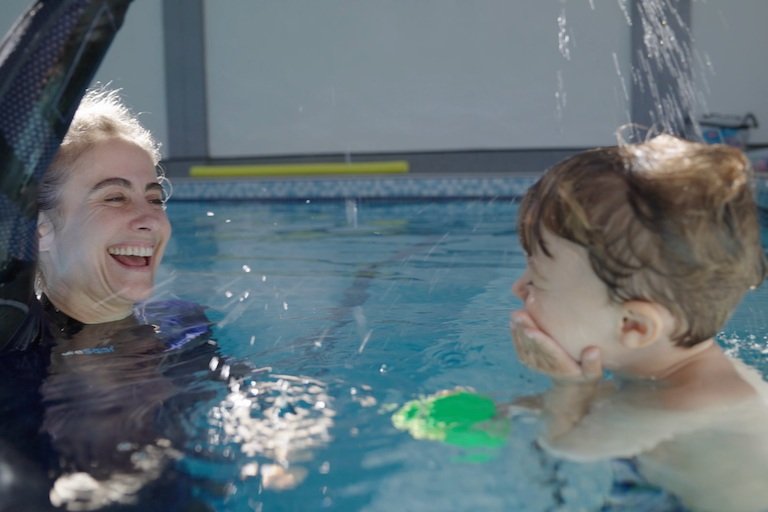At What Age Should My Child Start Swimming Lessons?
Children can start swimming lessons at any age but it's a good idea to familiarise your child with the sensation of being in the water from as young as possible.
That early introduction doesn’t have to be in a pool - the bath is an excellent opportunity to get them familiar with the feeling of water splashing on their bodies and faces.
The early months up to the age of one are really important for helping them get a ‘feel’ for the water and how their bodies move in it. At this time, parents do more of the work, holding on to their child and gently encouraging them to balance, rotate and even propel themselves forwards.
At any age, regular short sessions in water - whether it’s the local swimming pool or on holiday - can help your child build strength, coordination, fine motor skills, agility, even language - and will stand them in good stead for when they are ready to start lessons.
At a very early age children tend to learn by copying and through repetition - for example by making the association between words and actions such as ‘kick, kick, kick’. When it comes to getting them comfortable with going under the water, you can encourage them to blow bubbles or bob them up and down before giving them a cue like ‘ready, go’, taking an exaggerated big breath and submerging your mouths or whole heads under the water then popping back up with plenty of eye contact and smiles.
Here, you should be led by the child and if they seem in any way uncomfortable, give it a miss until they’re ready.
The most important things to familiarise learners with as soon as possible are the ability to float independently - on their backs and their front - and aquatic breathing (comfortably blowing bubbles with their faces in the water). A child needs to be able to do both of these before progressing to learning swimming strokes.
When they get to around two-and-a-half, most children are stronger and able to take more specific instructions; that’s when their learning can really accelerate. They can be ready to move on from being comfortable in the water to focussing more on specific activities and skills such as balance, buoyancy, rotation, aquatic breathing and propulsion with their arms and legs - the building blocks for learning to swim.
At GoggleSquad we follow the ‘BLAPT’ principles, a rather ugly acronym for the different stages of learning each swimming stroke: body position, legs, arms, breathing and timing, all of which we teach through play and various engaging activities.
We only move to that stage when a child feels comfortable in the water. There’s little to be gained from trying to teach a child who doesn’t want to get in a pool.
For learners who aren’t keen on the prospect of even getting in the water, first of all don’t panic. We can help with sessions focussed on the basics, using a gentle and reassuring approach to help them to feel comfortable in their surroundings. This tends to start with sitting on the poolside close to the water and playing with toys. As everyone knows, play really is the way to a child’s heart, so giving them some watering cans and cups and letting them play with the water is a great place to start.
In fact, play is a theme that tends to form the basis of all swimming lessons for young children, whether by picking things up from the bottom of the pool or having fun races, children learn most effectively through play.
In summary, parents should try to familiarise their child with water as early as they can so that by the time they get to around two-and-a-half, they are in a good position to develop the core principles. However, If they aren’t quite there yet, that’s fine too. It is never too late to start, and here at GoggleSquad we pride ourselves on being able to instil a love of water and swimming in any child at any age.
For a free assessment or just to discuss your child’s needs, get in contact with us today.

